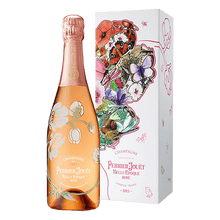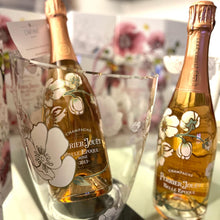FORMAT: 0.75L
GRAPE VARIETY: CHARDONNAY 45%, PINOT NOIR 50% MEUNIER 5%
DOSAGE: BRUT
VINTAGE: 2013
PLACE: AOC CHAMMPAGNE-FRANCE
GRADATION: 12.5VOL
| The House of Perrier-Jouët celebrates the anniversary of a flower. More than a flower, it is a symbol of the House's connection with art and nature since 1811. The founders, Pierre-Nicolas Perrier and Rose-Adélaïde Jouët, perpetuated their passion for botany, their attachment to the terroir, their love of art – and their vision of champagne. In 1902, brothers and art collectors Henri and Octave Gallice met Emile Gallé, a renowned botanist and leader of the Art Nouveau movement, who took nature as his source of inspiration. To keep the House's legacy alive, Emile Gallé decorated a Perrier-Jouët magnum with a spray of Japanese anemones, evoking the floral style of the House's champagnes. An icon was born, an emblematic flower that time would never fade. 120 years later, it makes the Perrier-Jouët Belle Epoque vintage cuvées instantly recognisable throughout the world. |
One of the best vintages ever for the icon of the Perrier-Jouët house . The fruit of a hot summer, which resolved an unpredictable and rainy spring in the vineyard, it has a prodigious balance and a marked exuberance , given above all by a Pinot Noir in great evidence. Extraordinarily fresh , it immediately offers you all the elegant roundness that you expect from a cuvée de prestige, with the unmistakable signature of the Maison: white flowers, spices, marzipan. Another top Champagne, after the highly celebrated 2008.
AT THE SIGHT
Pale and bright pink color animated by a fine and persistent perlage
ON THE NOSE
Pronounced aromas of rose and peony, wild strawberries and raspberry and pink grapefruit.
ON THE PALATE
A frank attack followed by a nice roundness and a silky finish.
From “Grand Brut” to “Blason Rosé”, up to the “Belle Epoque” vintages, producing Champagnes that are punctually distinguished by a refined, intense and sophisticated style, the company offers a range of labels with unmistakable characteristics, characterised by a broad and elegant aromatic persistence. All this is the result of knowledge passed down over time and in the silence of the cellars, where the chef de cave have cultivated and increased an important know-how that, as if that were not enough, is often enriched and embellished by internationally renowned artists who, since 1902, have decorated with their works the bottles that preserve the most important cuvées of the maison, almost as if to celebrate the tasting of Champagne in a sort of union that unites art, poetry and the beauty of everyday life.






